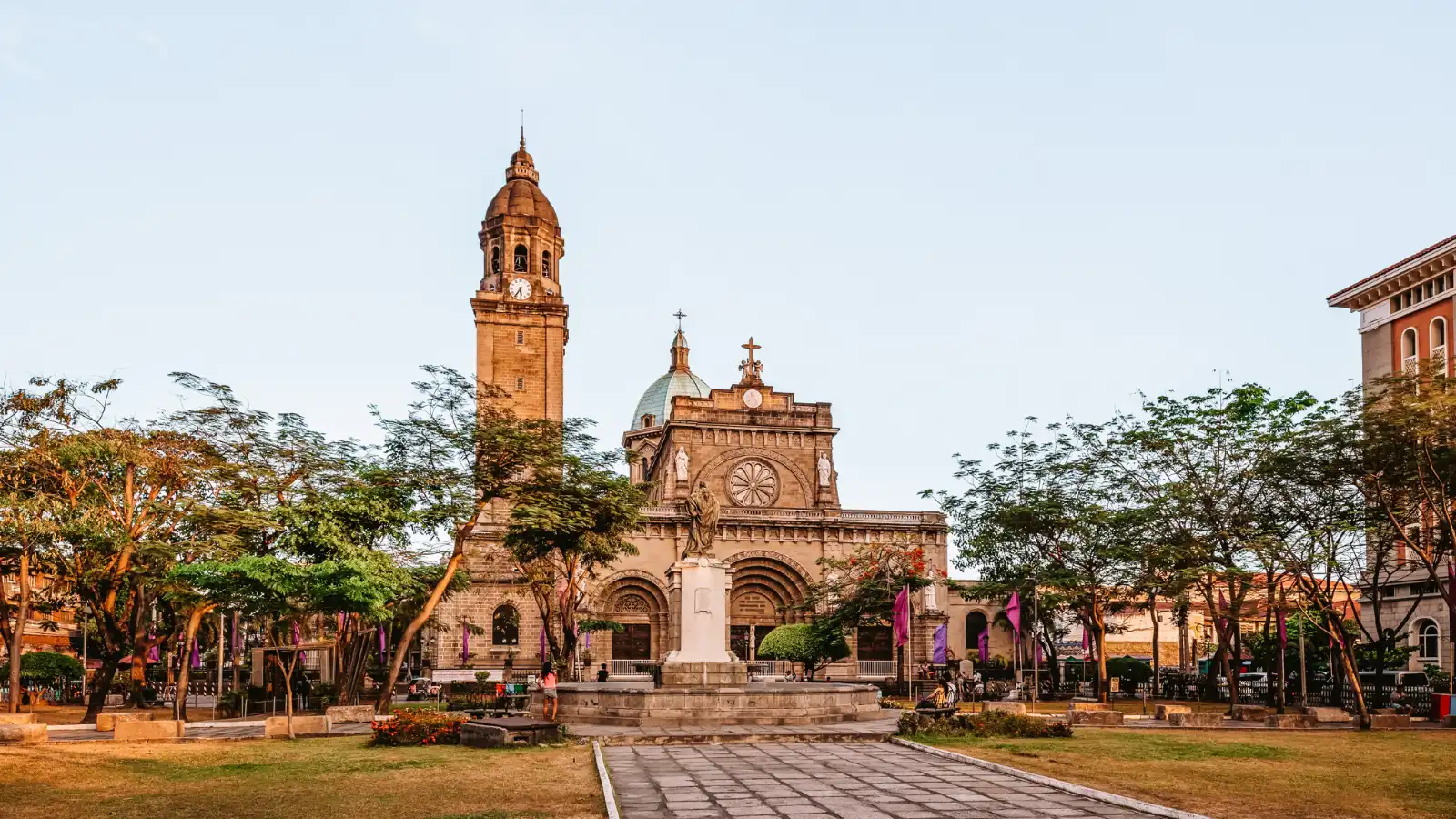12 Least Walkable Cities in the World Where Walking Is More Challenging Than You Think
All recommendations on World Wild Schooling are independently selected by our editors. We may earn an affiliate commission from purchases made through our links.
One of the most important factors to consider before booking your next trip is whether the destination you are traveling to is walkable. When considering a visit to a city, it’s essential to ask yourself: are the streets pedestrian-friendly? Are the popular attractions within a walkable distance? Do the locals themselves walk?
If the answer is no, don’t be discouraged. Instead, plan to rent a car, budget for taxi rides, or familiarize yourself with public transportation. Remember, some of the world’s least walkable cities offer unique attractions that are worth exploring, even if it means finding alternative ways to get around.
Ensure you plan your transportation properly within these 12 least walkable cities. Just to make your exploration safer and less strenuous.
Swipe and Vote: See What Travelers Recommend
Love a good stroll on vacation? Well, not in these cities. Which of these ‘walking-optional’ destinations would you still visit?
This is a swiper quiz, swipe right for yes, swipe left for no.
 © Richie Chan / Shutterstock
© Richie Chan / Shutterstock
 © SeanPavonePhoto / Adobe Stock
© SeanPavonePhoto / Adobe Stock
 © tampatra / Adobe Stock
© tampatra / Adobe Stock
 © Sean Pavone / Shutterstock
© Sean Pavone / Shutterstock
 © jon_chica / Adobe Stock
© jon_chica / Adobe Stock
Results
 1
1
 2
2
 3
3
 4
4
 5
5
Dallas, Texas, USA

If you are planning to relocate to or visit Dallas, you will likely need a car to get around the city. Only 10% of Dallas residents live within a kilometer of their schools and healthcare services. With this, over 89% of Dallas residents will need a car to get their children to school or to get to their doctors.
While in Dallas, you will not only have problems accessing daily amenities without cars but also realize that the city does not prioritize biking and walking trails, which has largely contributed to its car-centric culture.
Read also: Must-Visit Cities in the World
Houston, Texas, USA

Another USA city notorious for needing a car to get around is Houston. The city is characterized by pedestrian-unfriendly road infrastructure, high traffic volumes, and long distances between destinations. Also, only 10% of Houston residents live within a walkable distance of their daily amenities. To get to daily amenities or anywhere worth visiting in Houston, you will need more than your feet.
For an easy time exploring Houston, budget to rent a car or to use taxi services.
Read also: Most Beautiful Cities Around the Globe
Manila, Philippines

Manila only has 11 walking trails, which is devastatingly low for anyone who wants to explore the city on foot. Besides, the high rainfall—an average of 138.8 mm per month—means that you will likely need a car to explore Manila realistically.
Manila also has poor public transportation, especially in terms of routes and schedules, which makes it even more challenging to move from one spot to another without a car.
Read also: Cool Destinations in the World in July
Quito, Ecuador

There are many characteristics that make Quito one of the least walkable cities in the world. Top among them is its hilly terrain. You will need a car to get around Quito unless you are incredibly fit. Walking up and down the hilly Quito can get tiring.
Quito’s road infrastructure makes it highly unfriendly to pedestrians. The roads are characterized by wide vehicle lanes with straight and uncontrolled stretches. This contributes to the city’s overspeeding problems. Additionally, the intersections were made very wide, with large corner radii and provision for slip lanes, further encouraging overspeeding. The study further reveals that sidewalks are very narrow in Quito, something that pushes pedestrians back into the roadbed, exposing them to speeding traffic.
Moreover, informal parking is also a significant problem in the city. The present few sidewalks are often crammed with parking vehicles, which forces pedestrians to keep crossing from one side of the street to the other, even when there are not enough crosswalks in the cities.
Read also: Safest Cities Around the World
Bangkok, Thailand

Only a few major streets in Bangkok have sidewalks, and even the few sidewalks are very narrow. Every time you walk on the narrow sidewalks, you risk getting hit by cars.
You will also realize that people in Bangkok park their cars in just any space in the city, including sidewalks. So yes, the few sidewalks you find will likely be already occupied. Also, Bangkok is huge, with major attractions being very far away from each other. You will just need a car to get around. Some of Bangkok’s most walkable neighborhoods include Sukhumvit and Phra Nakhon. To explore anything outside these neighborhoods, you will be better off doing it by car.
Also, the city’s characteristic hot and humid weather can overwhelm anyone. If you are visiting in the hot season, battling these conditions while walking around can be difficult.
Read also: Cool July Destinations Across The Globe
Mumbai, India

Mumbai is a bustling city with crowded streets, just a few sidewalks, and high air pollution, making walking in the town a less-than-ideal experience. It is one of the cities where nobody cares about traffic rules, and crossing from one side of the road to the other can be an uphill task. Given the crowds in the city, pedestrians typically end up walking right into the roads, risking being hit by cars. Constantly dodging traffic, people, and animals is part of the walking experience in Mumbai.
🏨 Explore all your hotel options here
And even if you rent a car, you may still have a problem driving around the rowdy streets. If you plan to explore Mumbai through and through, you are better off doing so via taxis.
Save this
Read also: Iconic Places
Cape Town, South Africa

The beauty of Cape Town is irresistible. Whether you are into beautiful landscapes, beaches, or picturesque neighborhoods, you will find a spot to vibe within Cape Town. However, it is difficult to ignore Cape Town’s unsafe ratings. You also need to know that having the pedestrian right of way does not always mean that the vehicles will yield for you. Pedestrians always cross when the roads are clear and not always when the traffic lights allow them to.
While public transportation can be reliable in some parts of the city, it is essential to note that it doesn’t always cover the entire city. You will, therefore, need more than public transport to explore some parts of the city. Some of the most walkable parts of the town include Greenmarket Square and St George’s Mall in the city center, the V&A Waterfront, and some beach areas. Outside these areas, you need to exercise high consciousness and judgment to explore the city.
Also, Cape Town does not have a strong walking culture. To live like Capetonians, you may have to adapt to the driving-around culture.
Read also: Cheapest Countries To Visit
Dhaka, Bangladesh

Walking in Dhaka, the capital of Bangladesh can be quite a task. For starters, the city is one of the most densely populated cities in the world. The streets are very congested with traffic and lack proper sidewalks. Even the few sidewalks that are present are usually crowded with informal street vendors. With all that is going on, there is no space or peace of mind when walking around.
Also, it is not uncommon to bump into overflowing dumpsters, abrupt open drains, discontinued paths, and illegally stowed building materials on Dhaka’s sidewalks. The air in the city is also quite polluted, making it a bit stressful to walk around. While it is a city that has many things to explore, it is not a walkable city, just yet.
Read also: Visa-Free Countries
Los Angeles, California, USA

Los Angeles is one of the cities affected by heavy urban sprawl, limited public transportation options, and a car-centric culture. These factors make it difficult for tourists and locals to get around without a car.
Also, Los Angeles often ranks high among U.S. cities with the highest pedestrian fatalities, which could be the drivers’ or pedestrians’ faults. However, this still goes a long way in showing how bad pedestrian infrastructure is in Los Angeles and how unsafe it can be to explore the city on foot.
The wide car lanes often encourage overspeeding, which may sometimes result in fatalities. Besides, the city’s crosswalks are usually impractically far apart, making foot exploration even more difficult.
Read also: Most Beautiful Cities in the US
Patras, Greece

Located on the west coast of the Peloponnese, Patras is the third largest city in Greece. It is another destination that you are better off exploring with a car, as it has been ranked the least walkable city in Europe. Most of the city does not have any walking trails, making it extremely difficult to walk around safely.
Don’t let the lack of walkability deter you from exploring Patras. With a well-planned transportation strategy, you can still enjoy its historical attractions like the Patras Castle, the Archaeological Museum of Patras, the Roman Odeon, and Calma Waterpark. Also, if you plan your transportation well, you can fully enjoy its beautiful beach promenade, vibrant nightlife, and the February/March carnival.
Read also: Beautiful Cities in Greece
Orlando, Florida, U.S.

Many U.S. cities were not designed with pedestrians in mind, so it is no surprise that they rank among the least walkable cities in the world. Orlando, another major city in the U.S., is another destination where you will need a car to get around.
Florida Today revealed that you would need to cover at least 31 miles (approximately 50 km) and 6,500 steps to explore the top 5 attractions in Orlando. This is quite extreme, especially if you have only a few days in the city. Being the world’s capital of theme parks, you are probably imagining that you can walk around easily. Yes, you can do it inside the theme parks. But from one park to another, or from one attraction to another, save yourself the fatigue and hop on a car.
Read also: Cool August Destinations
Johannesburg, South Africa

Johannesburg is one of those cities where you just need to hire a car to see it well. While there are pedestrian-friendly areas in the city, they are limited. Planning for Walkability in Johannesburg describes it as particularly not walkable, with unevenly allocated pavements and expansive urban sprawl. Another study published in the Journal of Urban Affairs describes the walkability of Johannesburg as “extremely heterogeneous,” with some neighborhoods conspicuously lacking sidewalks while others have extensive sidewalks.
Also, Johannesburg is not that safe. It has constantly been ranked among the most unsafe cities in Africa. You will be better off not touring it on foot to enhance your security. For an immersive experience and your safety, get a car to explore Johannesburg.
Read also: World-Famous Landmarks
Pin It Now, Read It Later











